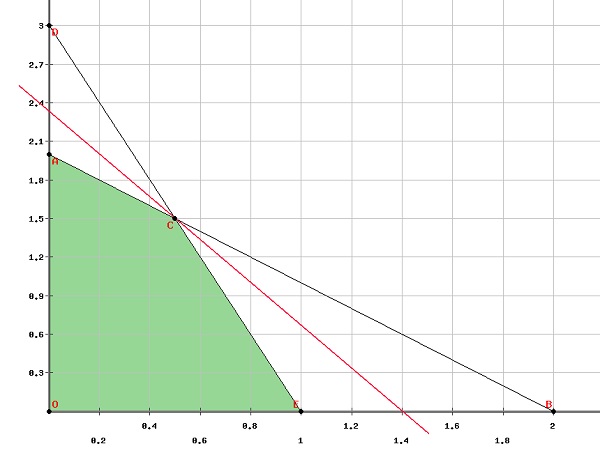

- #How to write c code on linprog how to#
- #How to write c code on linprog install#
- #How to write c code on linprog free#
I was able to import linprog with this code: from scipy.optimize import linprog The results would be the 8 players who have the highest y_pred score and stay under 50,000. I need to have 8 players with a total maximum Salary of 50,000.
#How to write c code on linprog how to#
I don't know how to use the code, but these are the variables I am trying to optimize: Date Salary Name Team y_predġ33 10400 DeMarcus Cousins 11 ħ0 7000 Spencer Dinwiddie 29 Now that we've written our program and compiled it, time to run it! You can run the program using − $. This command means that you want the g++ compiler to create an output file, hello using the source file hello.cpp. Assuming you installed the GCC, you can use the following command to compile the program − $ g++ -o hello hello.cpp You need to open your terminal/cmd and navigate to the location of the hello.cpp file using the cd command. We do this using a compiler we installed in the first step.

Now that we've written the program, we need to translate it to a language that the processor understands, ie, in binary machine code. This character marks the end of the statement Compile the Program Note that the statement ends with a semicolon ( ). In short, we provide a cout object with a string "Hello world\n" to be printed to the standard output device. This will become more clear to you as we proceed in learning C++. Last, we have a sentence within quotes that we'd like printed on the screen. Second the insertion operator << which indicates that what follows is inserted into std::cout. This statement has three parts: First, std::cout, which identifies the standard console output device. All statements between these braces are the function's body that defines what happens when main is called. We start a block using the curly brace() at line 5, marks its end. Whenever we run a C++ program, we start with the main function and begin execution from the first line within this function and keep executing each line till we reach the end. main() is the entry point of our program. Line 3− We then declare a function called main with the return type of int. Line 2− A blank line: Blank lines have no effect on a program. Lines beginning with a hash sign (#) are directives read and interpreted by what is known as the preprocessor. Header iostream, that allows performing standard input and output operations, such as writing the output of this program (Hello World) to the screen. Std::cout line which essentially tells the compiler to copy the code from the iostream file(used for managing input and output streams) and paste it in our source file. Create a new file called hello.cpp and write the following code to it − #include We'll print hello world to the screen using C++ in this example. Let's start with the epitome of programming example's, it, the Hello world program. Now that you have a compiler installed, its time to write a C++ program.
#How to write c code on linprog install#
You can download and install this compiler from
#How to write c code on linprog free#


 0 kommentar(er)
0 kommentar(er)
